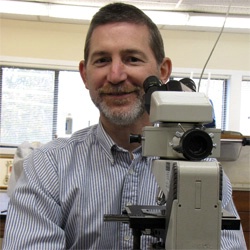 |
|
| SEARCH | MARINE DEBRIS | ||||||||||||||||||
|
 Marine debris is quickly becoming a hot topic in the scientific community, but most of what the public sees comes in the form of sensationalized media: images of water bodies covered in visible trash, talk of a giant “garbage patch." How much truth is there to these stories? Most importantly, what is the science telling us? This two-part webinar series features a chance to hear from three prominent scientists in this field. Hear how one is researching plastic pollution at the microscopic level and learn from two ocean current modelers about how numerical models can be used to accurately predict where debris will go, once it reaches the ocean.
Wednesday, April 30, 2014 7:00 pm ET / 4:00 pm PT You may have seen or read about the “Great Pacific Garbage Patch” and “marine debris” on the news or in various places around the Internet, but have you ever wondered what that actually means? What is marine debris and what are its effects on the marine environment? Dr. Erik Zettler, oceanography professor with the Sea Education Association, walks us through life in “The Plastisphere”, microbial communities calling microplastics their home. He also does some plastic pollution myth-busting as he addresses common misconceptions about ocean plastics. Dr. Erik Zettler is a Professor of Oceanography for the Sea Education Association, based in Woods Hole, Massachusetts. He is involved in extensive collaborative work with the Marine Biological Laboratory and the Woods Hole Oceanographic Institution, observing microbial life on microplastic debris found at sea.
Wednesday, May 7, 2014 7:00 pm ET / 4:00 pm PT Computer modeling can be used to make accurate predictions in just about every realm of science: weather, climate, primary productivity, ocean salinity, and the list goes on! Models can also help scientists predict where flotsam and jetsam will travel within ocean gyres; this is especially relevant today, with more people tuning in to the impacts of marine debris on ocean ecosystems. In this, the second of a 2-part webinar series, we will hear from Dr. Nikolai Maximenko and Dr. Jan Hafner, both research scientists at the International Pacific Research Center, who use computer models to predict debris trajectories in the ocean, including the debris jettisoned out to sea after the 2011 Earthquake in Japan. Dr. Nikolai Maximenko is a Senior Researcher of Oceanography for the International Pacific Research Center, based at the University of Hawai’i at Manoa. His research focuses on, among many things, mesoscale and large-scale ocean currents and the processes occurring at oceanic fronts. Dr. Jan Hafner is a Scientific Computer Programmer for the International Pacific Research Center, based at the University of Hawai’i at Manoa. His research interests lie in the world of numerical modeling and recently this work has been used to forecast trajectories for marine debris washed out from the 2011 Tohoku Earthquake in Japan. |
||||||||||||||||||
|
|||||||







